Colorado Brown Tarantula Spiderlings Seen for First Time in Burrow!
.jpg)
Description: Mother tarantula guarding an egg sac in the burrow, as seen on an endoscopic camera used by Bradley Allendorfer, EMU Student researching Colorado Brown Tarantulas on the Comanche National Grassland in Southeast Colorado.

BY SUE KEEFER
Very few people can say they’ve seen tarantula babies (spiderlings) in their burrows. Count tarantula researcher Bradley Allendorfer (and this reporter!) among them. Allendorfer knows of only two other people who have had this experience.
For several years now, students from Eastern Michigan University have been coming out to Comanche National Grassland to research tarantulas. Allendorfer is in his second year of his master’s program in ecology at EMU.
Readers may remember Dallas Haselhuhn from last year, who was working on his thesis on the tarantula’s mating season. Allendorfer decided to focus on comparing the activity of tarantula mothers with egg sacs with those without, and how the spiderlings are dispersed. His first trip out here was last summer, when he joined Haslehuhn and did some preliminary work toward his own thesis.
For his research, Allendorfer needed some different equipment, including an endoscopic camera that can be inserted into the burrows, which has proved to be extremely revealing. There haven’t been too many studies on tarantulas, he said: “There’s lots of studies on birds. Everyone loves birds.”
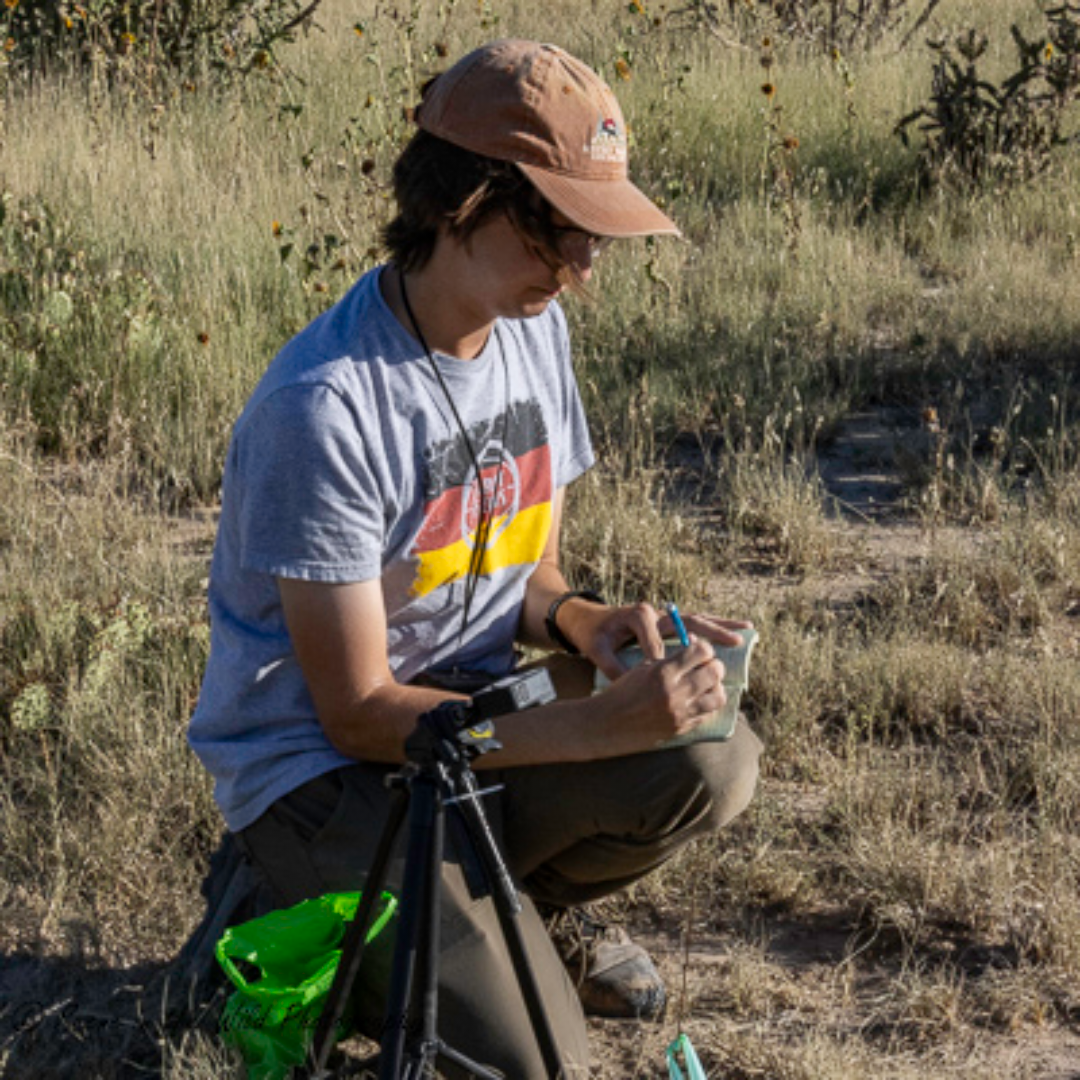
Allendorfer taking notes in the field.
Fortunately, there are people like Allendorfer and Haselhuhn and their professor, Dr. Cara Shillington, who want to change that. To them, tarantulas are fascinating. Plus, they are basically on the cutting edge of tarantula research, which is exciting.
The evening we met Allendorfer out on the site, he was very happy, because the night before was the first time he’d been able to see the tarantula spiderlings. He’d already discovered that mother tarantulas are, like most moms, very protective of their egg sacs. The camera would hardly reach the egg sac in the burrows when the mothers would appear and grab ahold of the sac. As we watched on the camera’s screen, we were able to see some spiderlings; then the mother jumped up: “That’s a mom right there, taking care of her spiderlings,” Allendorfer excitedly pointed out. He said that he’d seen the moms pull the egg sac farther into the burrow when the camera is inserted.
The night before, he also saw the spiderlings emerge from their burrow. Some of the spiderlings come out of the burrow and go back in, he said. Others come out in small groups and gather in clumps of grass. He’d seen about 20 spiderlings the previous night. “It was cool! They’d leave and just disappear, in a crack of dirt.” It’s unknown what happens to the spiderlings once they emerge. At some point they end up in their own burrows.
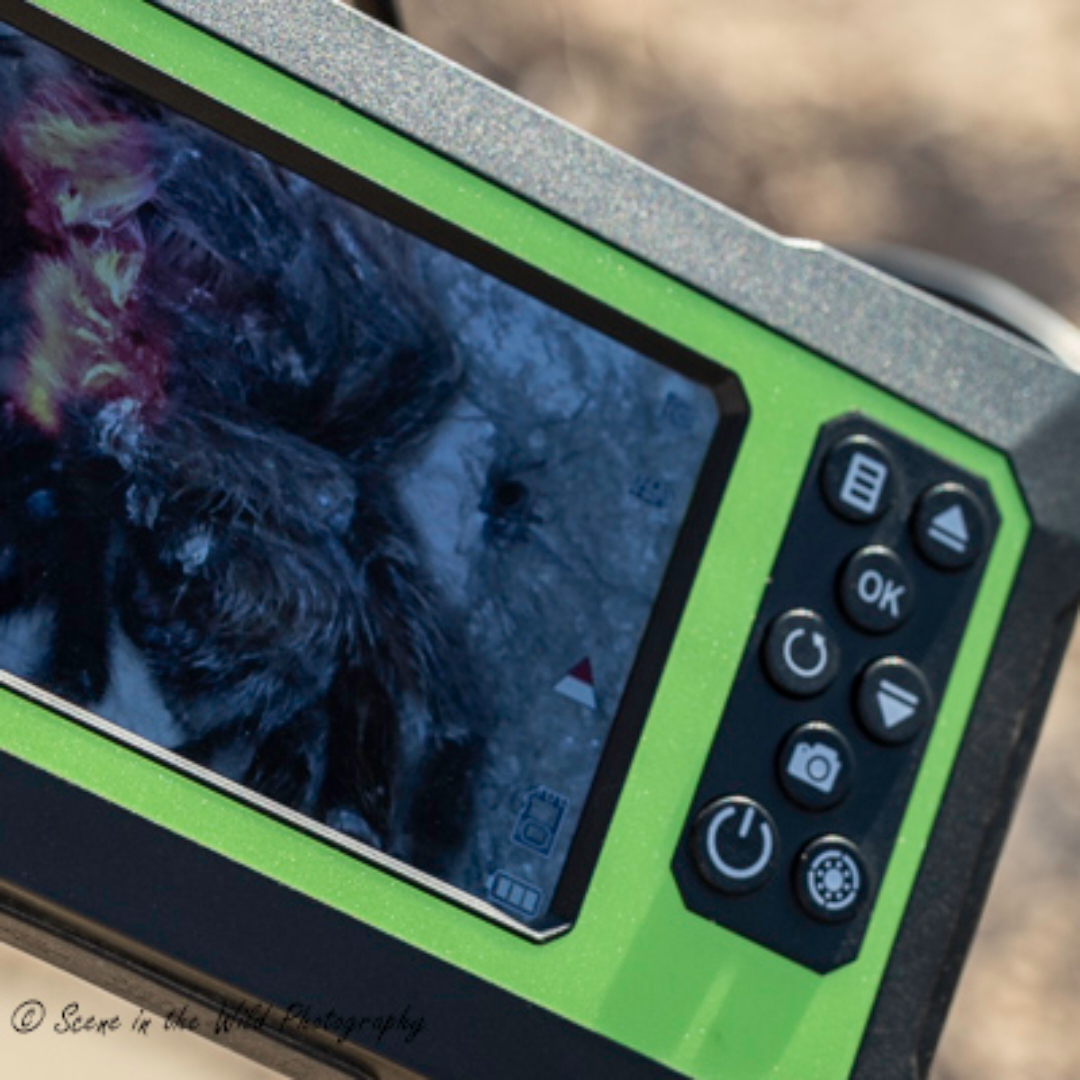
Spiderling is to the right of the female tarantula.
He noted that the spiderlings had come out of a burrow that he didn’t even have marked. He has 152 burrows marked, with various colored ribbons signifying if he’d checked them in the morning or evening, or if he’d seen an egg sac present. He’s found 19 egg sacs. There are Go Pro cameras set at some of the burrows, that take photos every minute to check on the status of the egg sacs. The cameras have about two and a half hours of battery life, so he has started spending nights out there on the prairie, making sure the batteries are fresh, and, of course, checking for spiderlings. He also has thermometers by the burrows to record the temperature, as well as small rulers. He’s careful not to disturb the burrows too often, so it’s important that he includes the times he’s checked the burrows in his notes.
He's intrigued by where the burrows are situated. Some are out in the open, while others may be in a stand of prickly pear or cholla. Some have grass seeds around the opening. He is checking to see if the vegetation or lack thereof is different around the burrows that contain egg sacs. It might have something to do with temperature tolerance. Also, some burrows seem quite close to each other—the why of that is another question.
There are many unknowns, which make this experiment that much more exciting, not to mention important. Aside from his main research, he’s also interested in seeing if males might emerge from some of the burrows. He did see an adult male recently. (Males stay in their burrows until they’re about seven years old, and then come out to look for a mate. Once the mating happens, they will die—either because the female eats them or because they’ve fulfilled their purpose. Females, however, may live to 30 years or more—staying within about a foot of their burrows.)
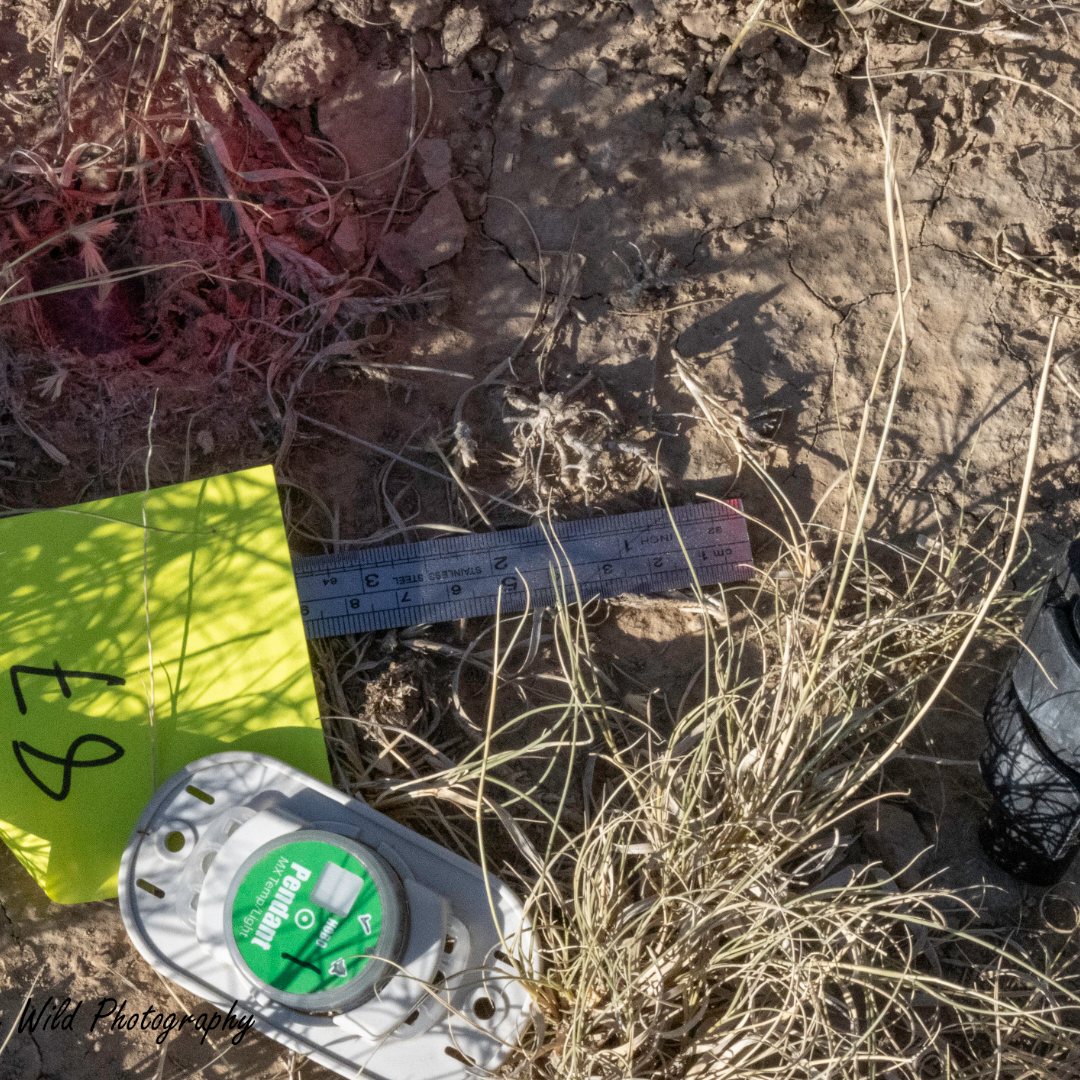
Some of the equipment: thermometer, ruler (red light on burrow is from camera)
He’s seen only two female tarantulas eat; both ate grasshoppers. He did see one catch a cricket when the spiderlings were leaving. It’s not certain how often tarantulas eat. He noted that tarantulas in captivity are probably fed a lot more frequently than how they would eat in the wild.
There’s also some thinking that a female has an egg sac every other year. They mate in the fall, overwinter in the burrow, produce the egg sac, and the spiderlings hatch shortly before the next mating season begins. Allendorfer said that when they were at the site early July last year, they saw some egg sacs, so they think that’s about when the sacs are made. Then the think the spiderlings grow for about a month in the egg sac. The spiderlings molt once in the egg sac and once again before leaving the burrow. From what he has seen, once they’ve hatched, they stay in the burrows for a while. “People think tarantulas are ferocious,” he said, but they do exhibit maternal behavior, and apparently, a type of social nesting behavior—something else to study!
“It’s fun to see how the burrows are laid out,” he said. Some are straight down, while others are twisted. He’s not sure how far down they go. The farthest the camera has gone so far is 15 centimeters—that was one the tarantula appeared, so he didn’t check farther. He’s fairly certain the burrows can be deeper than that.
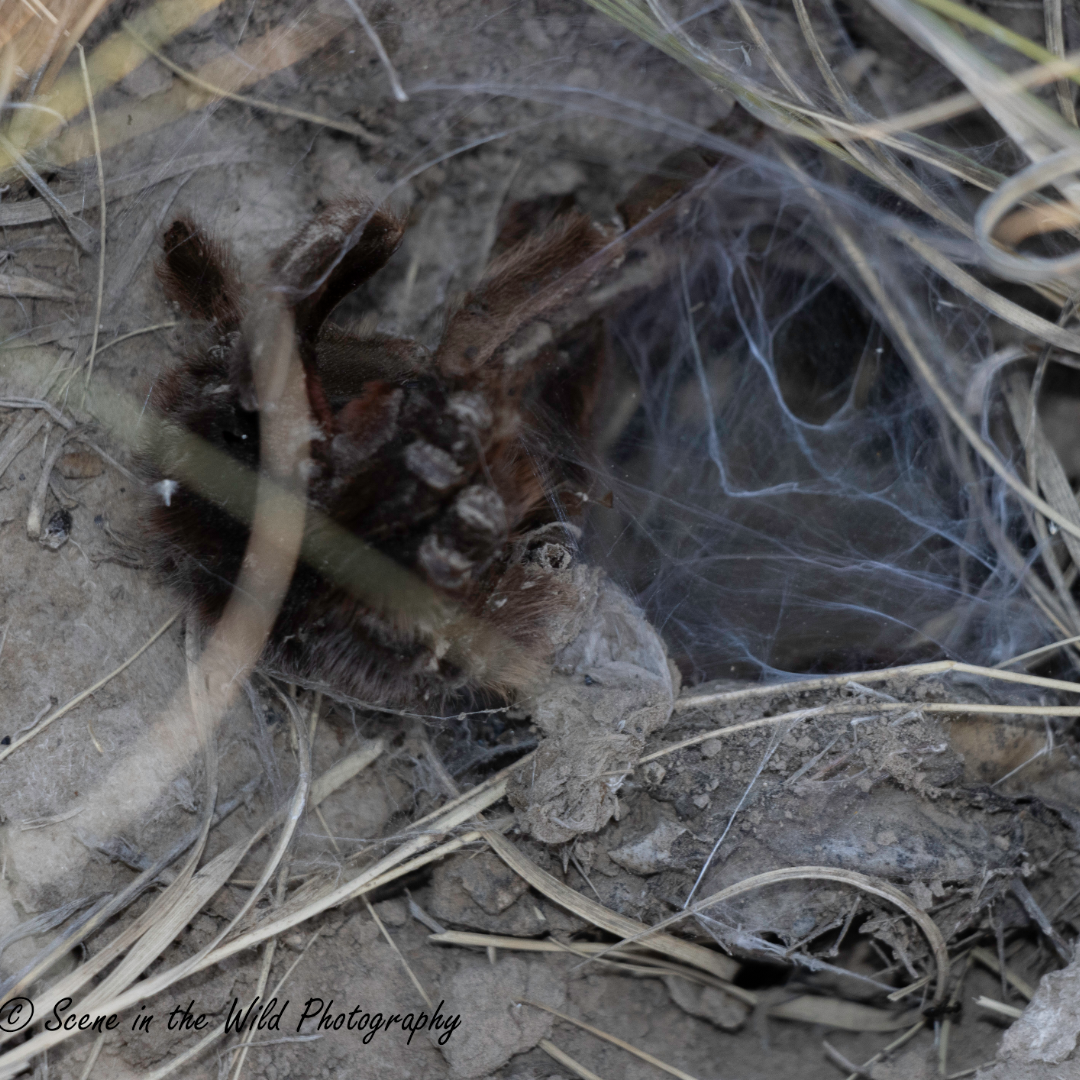
Tarantula exoskeleton near burrow entrance, which is covered with spider silk
Another question concerns the (spider) silk over the burrow holes. Does it help keep the burrows more humid to benefit the spiderlings? He’s noticed that the silk is usually just covering the holes in the daytime, but it’s removed at night. There’s another thought that the spiderlings leaving the burrows leave a silk trail, probably containing pheromones so that the other spiderlings can find their way out.
As we left Allendorfer, the sun was coming down, and he was preparing to spend the night in his truck. Like a proud papa, he just had to keep checking on “his” spiderlings.
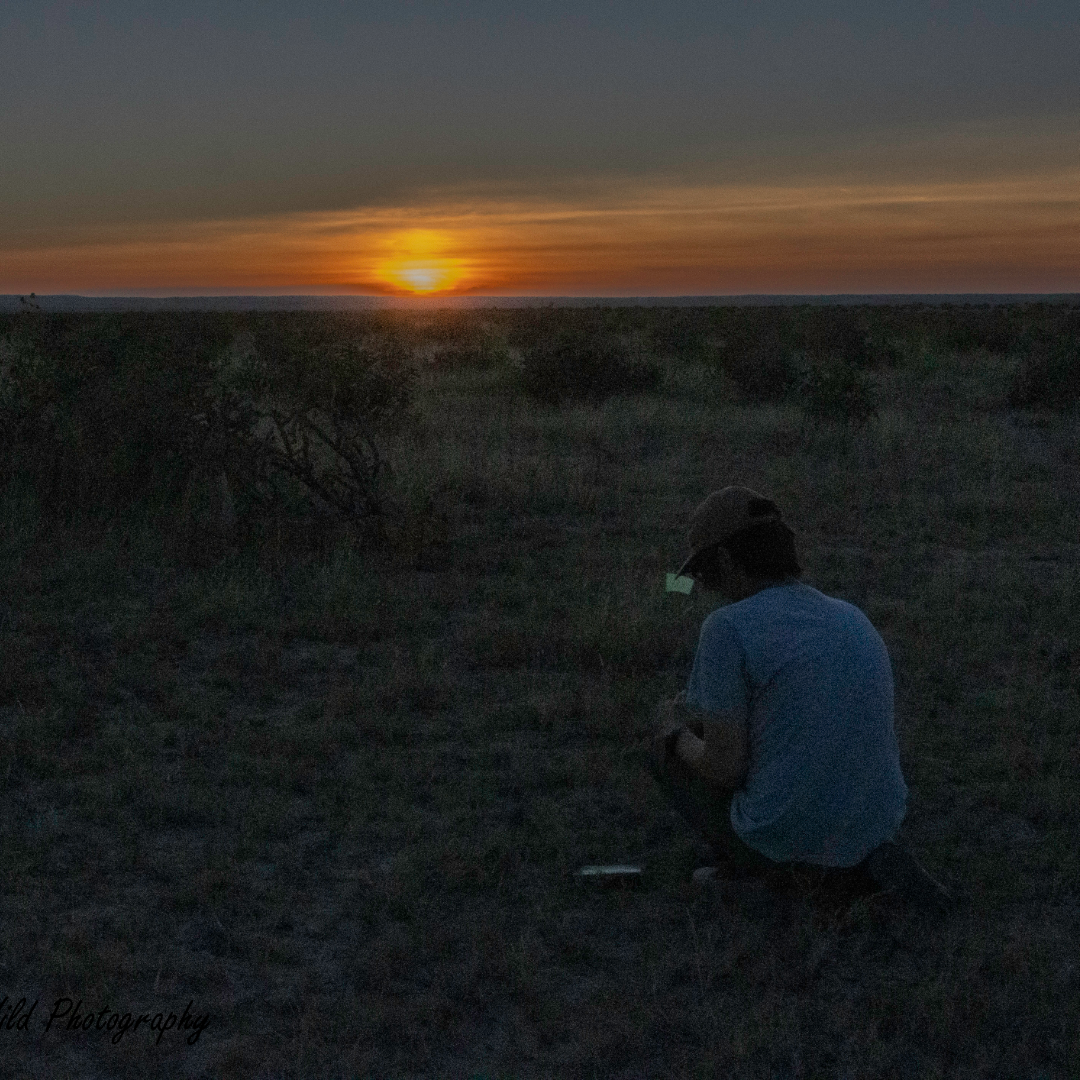
As the sun goes down, Allendorfer keeps working.
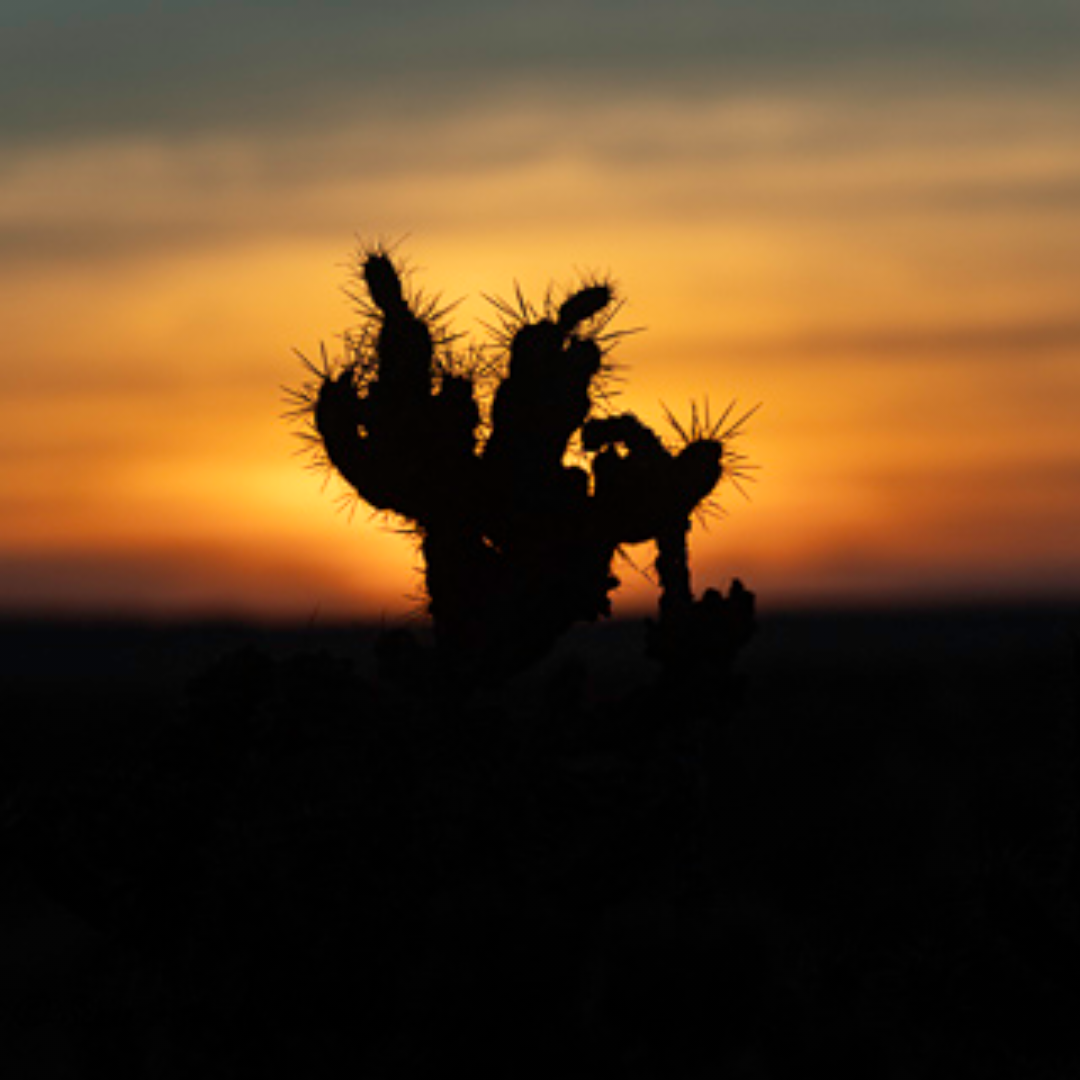
Related Content:
SECO News Inaugural Tarantula Fest Merchandise Re-Emerges
Watch the Video:
Follow SECO News on Facebook.
Subscribe to the SECO News YouTube Channel.
Follow SECO News on Facebook.
Subscribe to the SECO News YouTube Channel.












.png)

